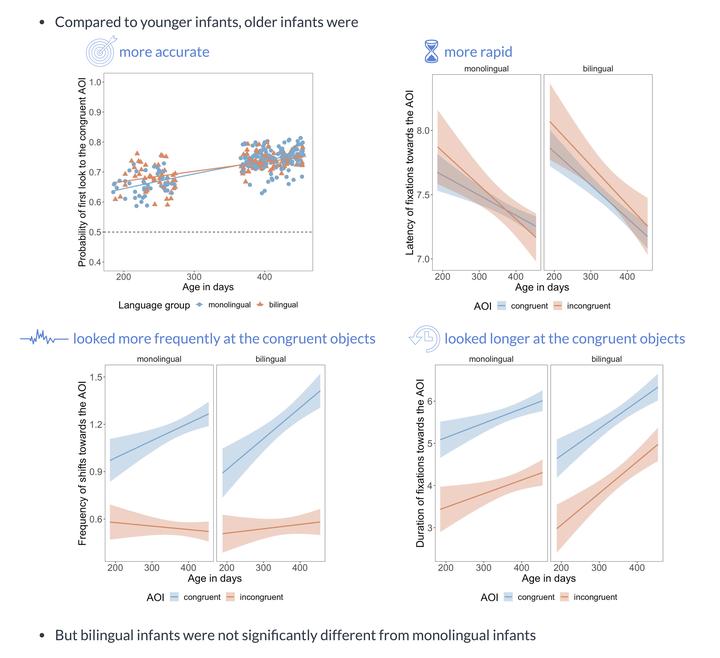The development of gaze following in monolingual and bilingual infants: A multi-laboratory study

Abstract
Determining the meanings of words requires language learners to attend to what other people say. However, it behooves a young language learner to simultaneously encode relevant non-verbal cues, for example, by following the direction of their eye gaze. Sensitivity to cues such as eye gaze might be particularly important for bilingual infants, as they encounter less consistency between words and objects than monolingual infants, and do not always have access to the same word-learning heuristics (e.g., mutual exclusivity). In a preregistered study, we tested the hypothesis that bilingual experience would lead to a more pronounced ability to follow another’s gaze. We used a gaze-following paradigm developed by Senju and Csibra (Current Biology, 18, 2008, 668) to test a total of 93 6- to 9-month-old and 229 12- to 15-month-old monolingual and bilingual infants, in 11 laboratories located in 8 countries. Monolingual and bilingual infants showed similar gaze-following abilities, and both groups showed age-related improvements in speed, accuracy, frequency, and duration of fixations to congruent objects. Unexpectedly, bilinguals tended to make more frequent fixations to on-screen objects, whether or not they were cued by the actor. These results suggest that gaze sensitivity is a fundamental aspect of development that is robust to variation in language exposure.